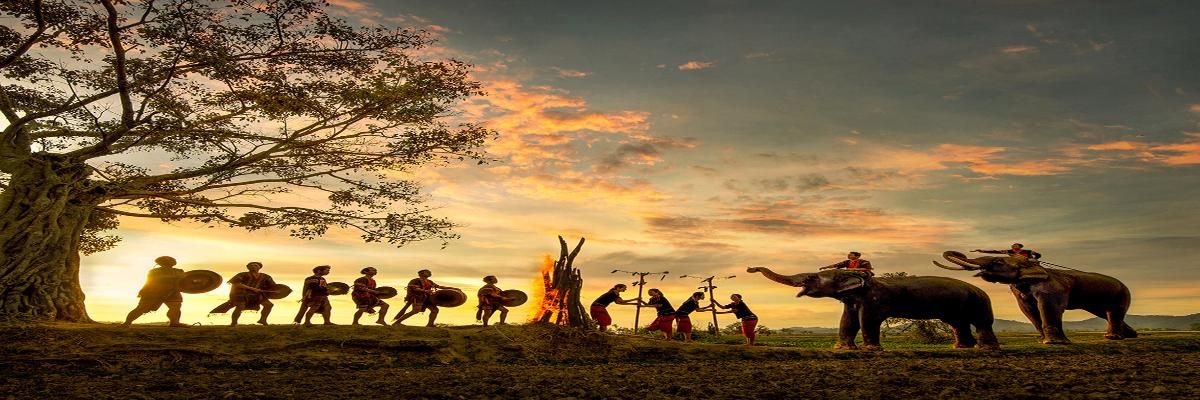Overview of the Central Highlands
Tay Nguyen – the Central Highlands, including Gia Lai, Kon Tum, Dak Lak, Dak Nong, and Lam Dong provinces, is a strategic area for economic, political, and national security and a diversified, specific folk culture region of Vietnam. Tay Nguyen, which has plentiful traditional rituals following the lunar calendar and the circle of life: wedding rite, and tomb abandonment ceremony…, has been popular with the Milpa civilization that is spirit support in moral life and founds special diversified vast culture region.
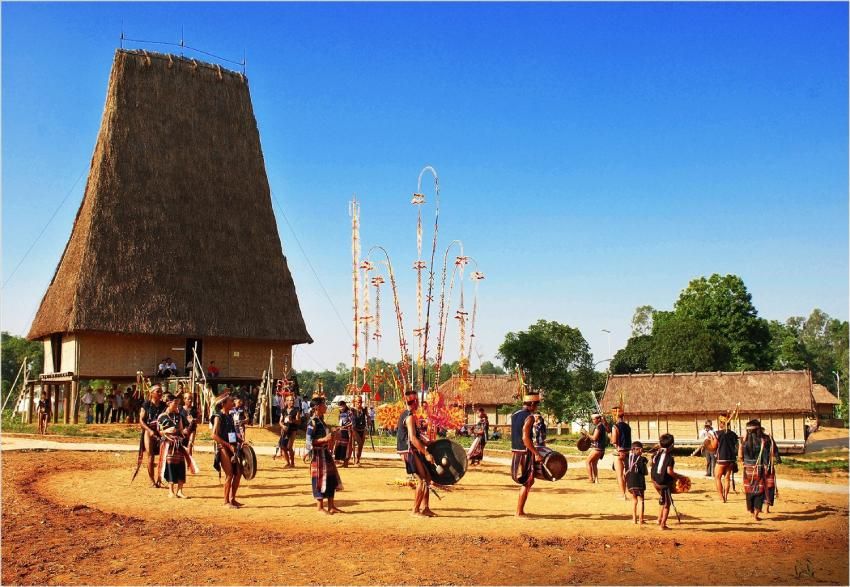
Central Highlands' traditional culture, both material and immaterial heritage, such as epics, festivals, gong art, and portray techniques has contributed to enriching and asserting Vietnamese cultural features, and has been a pride of Vietnam country.
Explore the Tay Nguyen Culture
Central highlands’ common house
Tay Nguyen is the residential place of ethnic groups such as E De, Jrai, Ba Na, Se Dang, and Gie Trieng… It is well-known for epics, gong, and especially traditional common houses. Central Highlands’ common house is a great work of art, including sculpture, painting, and decoration, a symbol of the community’s power and the country’s pride, the spirit of Tay Nguyen mountain village.
Each ethnic minority has various common house types with typical folk architecture. Commonly, it is 10 meters long, 4 meters large, 15 – 16 meters high, or only 7 – 8 meters high.
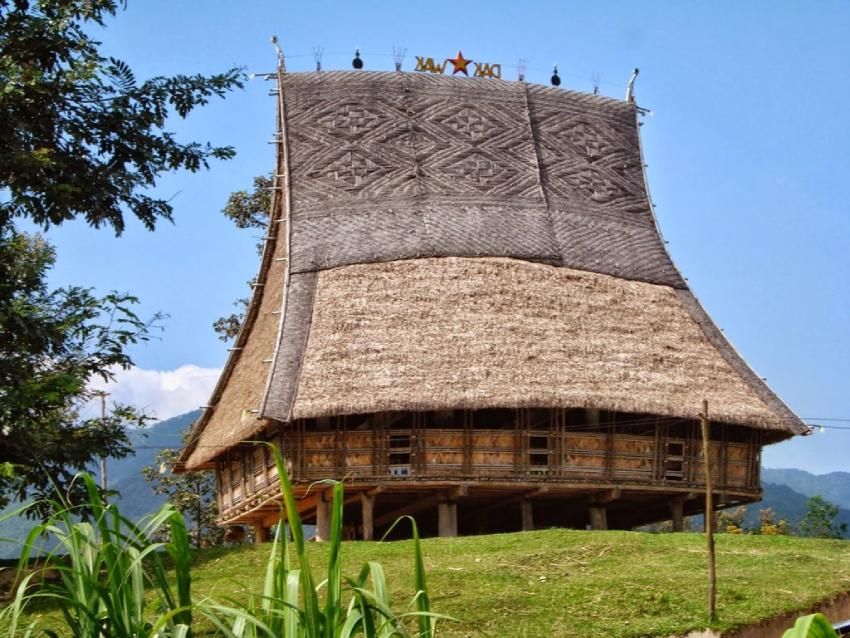
Common houses have an important role in the spirit culture, social life, and beliefs of Tay Nguyen ethnic minorities. They are a typical cultural heritage, attached to the residential history of ethnic groups. They attract viewers through their simple technique and multiform architecture. They are symbols of spirit value, showing deep sacred significance in each member and central highlander community.
The exhibitions of the spiritual culture of the Central Highland
The buffalo sacrifice rituals: To the ethnic groups in Tay Nguyen, the buffalo is the symbol of prosperity and power in the community. So, the Tay Nguyen people sacrifice the buffalo to the Gods.
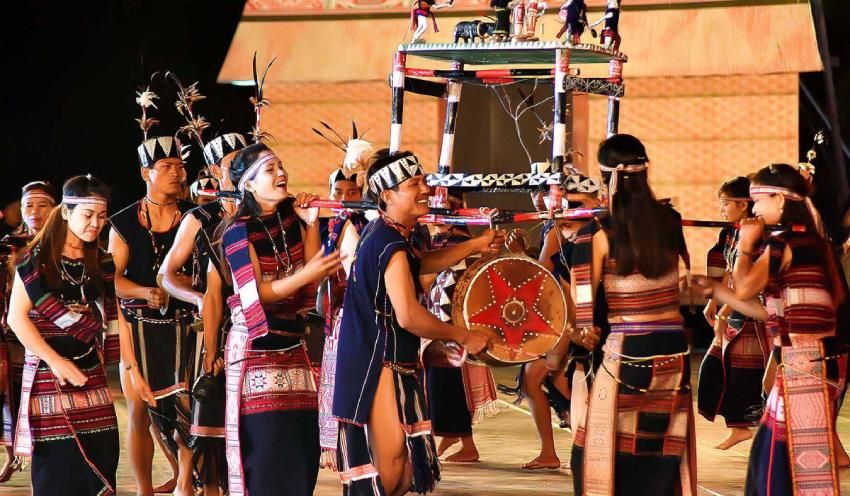
Statue of tomb’ houses
The statue of the tomb’s houses is typical, special sculpture art kind of the Central Highlands traditional culture. It has existed in most of the spirit life of ethnic groups such as Gia Rai, Bana, E De, Xo Dang… This kind was made at the time of preparations for the tomb-abandoning ceremony. Following the opinion of the central highlander, living nomadic life, the tomb-abandoning ceremony finishes, and the spirit of the dead will come back with an ancestor, starting the “new life” in the next world and ending the relation between the living and the dead. The tomb-abandoning ceremony, its great significance is a big ceremony. It is organized in spring, every year, at a cemetery and attracts lookers.
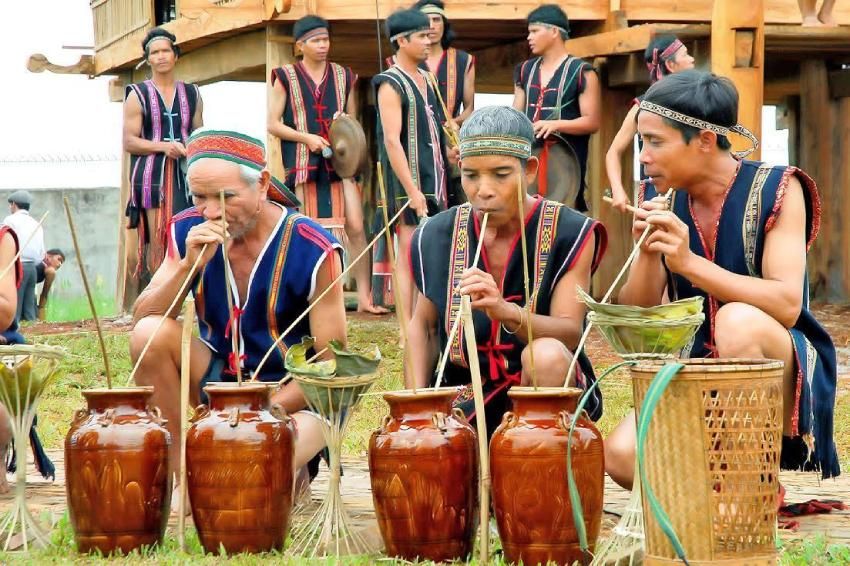
During the ceremony, some works need preparation such as cereals, “Ruou Can” (wine), rebuilding tomb houses… especially, making wooden statues. The Statue of the tomb’s houses does not describe details, only outline and patch, but its posture and appearance are diversified and plentiful. The Statue of the tomb houses of Tay Nguyen, through the hands of craftsmen, is a work of art in spirit life. It has created a close feeling with Central Highlander.
Gong culture
The Gong culture of the Central Highlands was officially recognized by UNESCO as a masterpiece of humanity. It originated from the Dong Son civilization with its bronze drums being well known.
Gongs are cast of bronze alloy with a variety of shapes and sizes: “Cong” has a dome in the middle and “Chieng” has none, having a diameter from 20cm to 60cm or 90cm to 120cm for big types. Gongs can be used in a single or a set of six to twelve units. There is a set of up to 18 – 20 units such as the Gong set of Gia Rai ethnic.
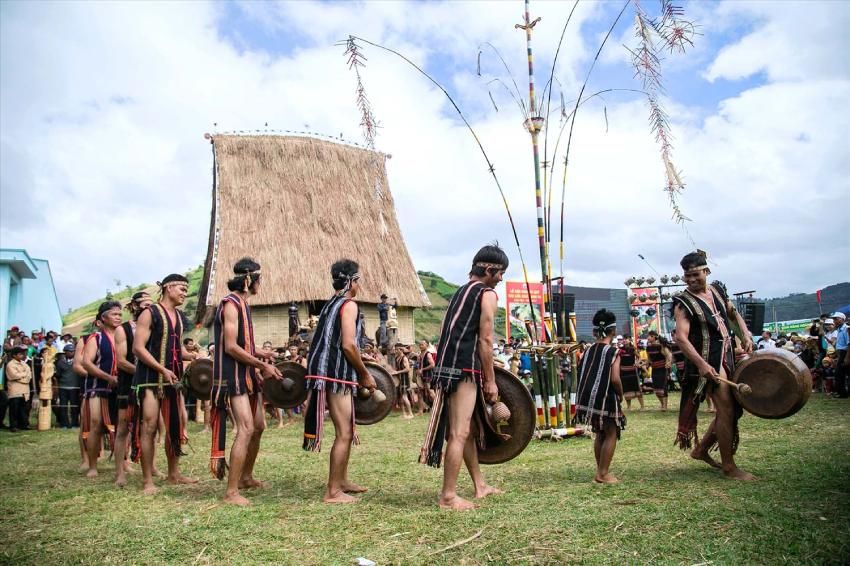
Gongs are closely associated with the life of the Central Highlanders, reflecting their joys and sorrows in daily life. It has appeared in most rituals and ceremonies such as weddings, welcoming of the New Year, New Rice and New House Festival, Triumph celebration…
Gongs are a medium of communication between people and deities of Central Highland ethnic groups. Every gong and alcohol jar is a symbol of the wealth of an individual, family, and ethnic group.



